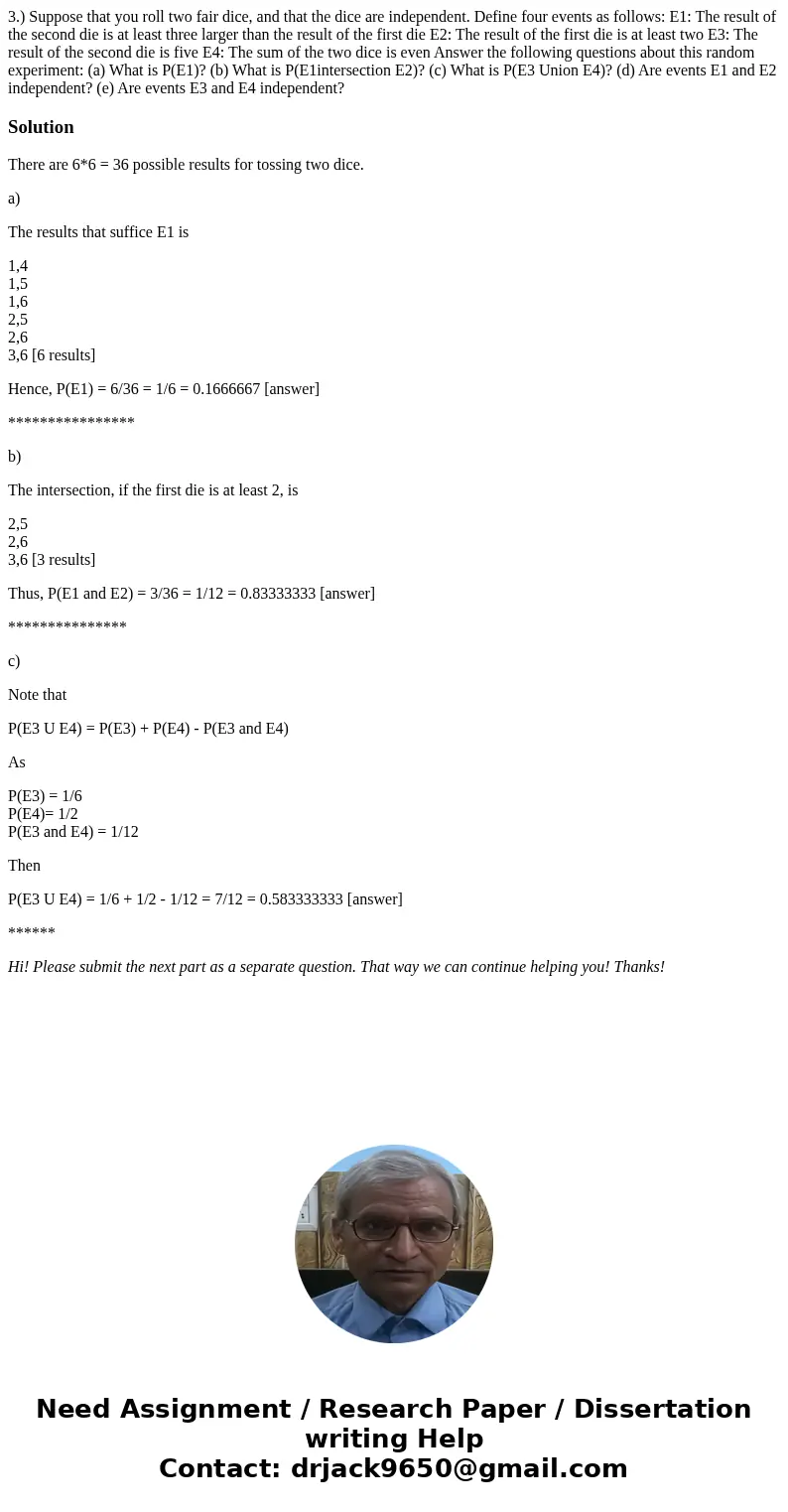3 Suppose that you roll two fair dice and that the dice are
3.) Suppose that you roll two fair dice, and that the dice are independent. Define four events as follows: E1: The result of the second die is at least three larger than the result of the first die E2: The result of the first die is at least two E3: The result of the second die is five E4: The sum of the two dice is even Answer the following questions about this random experiment: (a) What is P(E1)? (b) What is P(E1intersection E2)? (c) What is P(E3 Union E4)? (d) Are events E1 and E2 independent? (e) Are events E3 and E4 independent? 
Solution
There are 6*6 = 36 possible results for tossing two dice.
a)
The results that suffice E1 is
1,4
1,5
1,6
2,5
2,6
3,6 [6 results]
Hence, P(E1) = 6/36 = 1/6 = 0.1666667 [answer]
****************
b)
The intersection, if the first die is at least 2, is
2,5
2,6
3,6 [3 results]
Thus, P(E1 and E2) = 3/36 = 1/12 = 0.83333333 [answer]
***************
c)
Note that
P(E3 U E4) = P(E3) + P(E4) - P(E3 and E4)
As
P(E3) = 1/6
P(E4)= 1/2
P(E3 and E4) = 1/12
Then
P(E3 U E4) = 1/6 + 1/2 - 1/12 = 7/12 = 0.583333333 [answer]
******
Hi! Please submit the next part as a separate question. That way we can continue helping you! Thanks!

 Homework Sourse
Homework Sourse